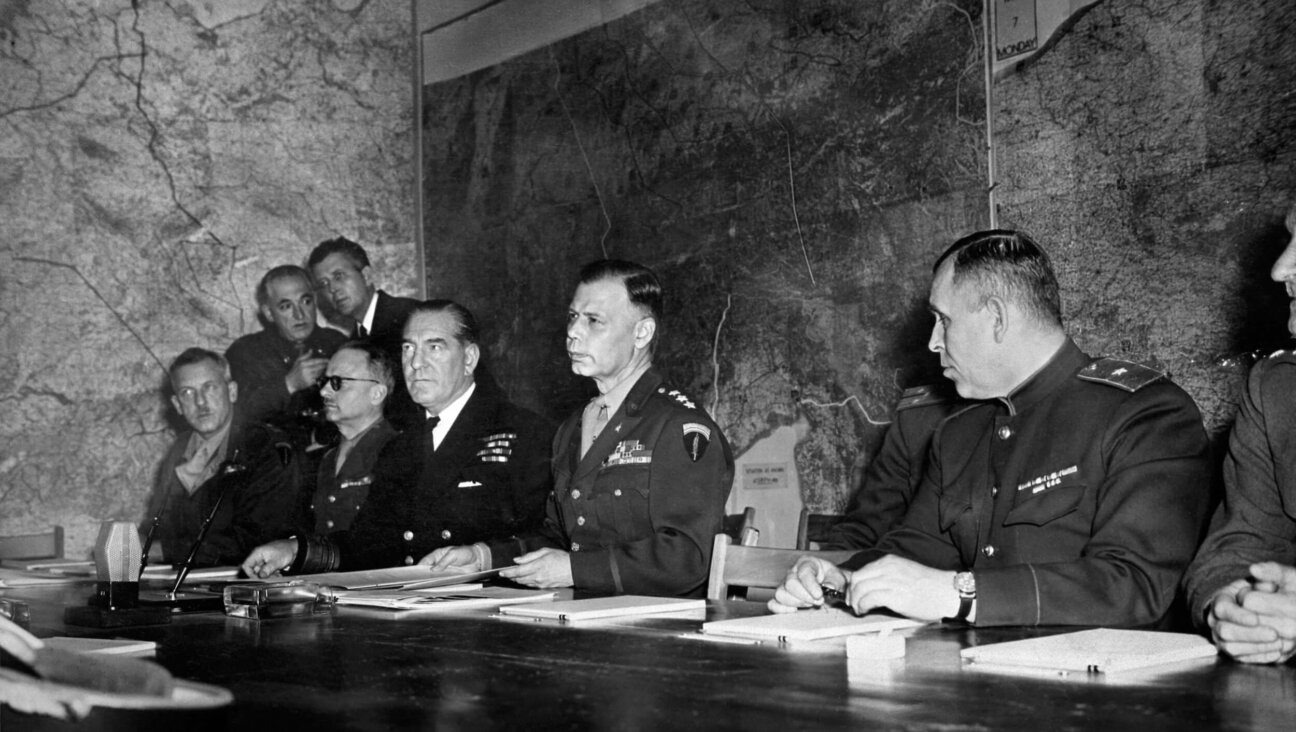From Memory to History
I did not go to Auschwitz. I did not go to Majdanek or Treblinka, or to any other Nazi extermination camp. I remember only the skeletal children agonizing on the sidewalks of the Warsaw Ghetto, their stomachs swelled by hunger.
I only discovered Auschwitz later, after the war. I went there with my parents, like you visit the grave of someone very dear, with your heart on your sleeve. The camp was brimming with activity: Men were cleaning the abandoned barracks, filling up mass graves, emptying ashes from crematorium ovens and cleaning the gas chambers. What struck me at the time, and what I still vividly remember, are those three mountains at the entrance to the camp. Three mountains seemingly higher than the Himalayas and more terrifying than Vesuvius with its slopes covered with smoldering lava. The first was made of thousands upon thousands of pairs of glasses. The second was made of children’s shoes. And the third was made of human hair. Seven tons of human hair, apparently. The memory of those three huge piles — the remains of countless lives — still makes me shiver with shame and rage 60 years later.
“January 27, 1945,” recounted Primo Levi, “four young Soviet soldiers on horseback showed up at the entrance of the camp.” They were visibly surprised to discover in a fog of snow this huge white immensity overlooked by black chimneys and surrounded by barbed wire, behind which human skeletons were moving in a deafening silence. At that point, 7,000 people desperately clinging to their lives remained in Auschwitz. Many were children — particularly twins who were to serve as guinea pigs for the experiments of the infamous Dr. Mengele. The four soldiers, wrenched by their sinister discovery, fled and went to tell their superiors.
It was by accident that the 60th Army from the First Ukrainian Front, headed by Marshall Ivan Konev and rushing toward Silesia and Berlin, discovered Auschwitz, which would become the symbol of the destruction of European Jewry. General Vassili Petrenko, the last of the generals who liberated Auschwitz who is still alive, told me that it was only there and then that he learned about the fate of the Jews under Nazi occupation.
But one had to wait until 1991 and the downfall of communism for the word “Jew” to appear on the commemorative stele of the world’s largest cemetery. “Here, between 1940 and 1945,” read the inscription in 19 languages—but not Yiddish or Hebrew — “four million men, women and children were tortured, assassinated by Hitlerian fascists.”
Why hide the identity of most of Auschwitz’s dead? Was Europe afraid to acknowledge that it had allowed part of its population to be deported because they were Jewish?
Now, with the Holocaust barely recognized at all — the fact that one-third of the Jewish people was exterminated by the Nazis and their allies having been included in the schoolbooks of a handful of the world’s countries — the memory of this genocide is already contested. It is as if some feel that remembering this event impedes the denunciation of other massacres, other persecutions. Is it because we are talking about Jews or because this genocide is unique? Unique because it was premeditated and organized methodically by a minority and executed by the majority of a people with the complicity of the neighboring peoples and using modern technology.
This perhaps explains the particular solemnity of the 60th anniversary of the liberation of Auschwitz. On January 27, for the first time, 25 heads of state will gather in this doomed place that took away 1.5 million lives, including 1.1 million Jews and many Gypsies.
When I received the invitation to the ceremony from the president of Poland, I was suddenly afraid: What if this is the last time such a memorial will take place? What if it marks the inevitable transition from memory to history?
The Bible orders us to remember. One hundred and sixty-eight times, it says: “Remember.” Remember that evil exists and that it has a different face every time.
Jews have long memories. They remember very ancient events like the destruction of the Jerusalem Temple in 70 C.E. by Titus and the Roman legions. They remember the Crusades and the devastation of most of Europe’s Jewish communities. They remember the Inquisition and the expulsion from Spain in 1492. They remember the pogroms at the hands of the Cossacks in Ukraine and Central Europe in 1648…. But who, in a hundred years, will still remember Auschwitz, besides the Jews? The Germans, maybe.
The issue is worrisome. How can humankind, consumed by daily drama, draw a lesson from this tragedy? Maybe through good. By demonstrating that in its war against evil, it is not always vanquished. “Evil… possesses neither depth nor any demonic dimension,” wrote Hannah Arendt. “It can overgrow and lay waste the entire world precisely because it spreads like a fungus on the surface…. Only the good has depth and can be radical.” How can one prove that good exists? Thanks to those who carry out goodness and justice: the righteous.
Those righteous who, at a time when the majority was killing or standing by, risked their lives to save lives. They were Catholics, Protestants, secular people and Muslims. I cherish their testimonies. They speak as much, maybe even more, than the testimonies of survivors and the writings of historians. They teach us how, even in such inhuman times, one can preserve his humanity.
Berthold Beitz, for instance. A German, he has headed the Krupp Foundation in Essen in recent years. During the war, he saved 800 Jews in the Polish town of Boryslaw. “I am now 91,” he told me. “Well, I can say that I did something that had no economic consequences but certainly human consequences — and this is much more important in my eyes. My children, my grandchildren, my great-grandchildren will know it. This is what’s needed. In my heart, I am proud to have helped all those Jews escape the death trains. But, in truth, how could I live if I hadn’t done it?”
Irena Sendler is Polish. During the war, she was a social worker. With her friends, she helped 2,500 children escape from the Warsaw Ghetto. When she told me her story, she wept: “Today, I fully realized that I did not do all I could. I could have saved more. I feel remorse and I will until the end of my days….”
We were able, my parents and I, to leave from the ghetto right at the beginning, thanks to a Catholic friend of my father. A righteous person. Fifty years later, during the genocide in Rwanda, the now internationally popular singer Corneille was the only survivor from his family, thanks to a Hutu. A righteous person.
The Talmud says that in each era, there are 36 righteous people, in order for the world to survive. The philosopher Pascal put this inestimable number at 9,000.
Recounting the actions of the righteous during the commemoration of the liberation of Auschwitz in no way diminishes the infamy of the murder of the camp’s victims. To a certain extent, it highlights it. Because if some men extended their hand to other men in dire straits, why did others not do so? It would also introduce, from the dark days of the past, whose shadow is still hovering over the world, a ray of light — and one more reason to keep the memory alive, without end.
Marek Halter is the author of “The Book of Abraham” (1983) and, most recently, of “Sarah,” “Tsippora” and “Lilah,” a trilogy on the biblical matriarchs (Robert Laffont Editions, 2003-2004), which is being published in the United States by Crown. He is one of the founders of the French antiracism group SOS Racisme.
Translated from the French by Marc Perelman.
The Forward is free to read, but it isn’t free to produce

I hope you appreciated this article. Before you go, I’d like to ask you to please support the Forward.
Now more than ever, American Jews need independent news they can trust, with reporting driven by truth, not ideology. We serve you, not any ideological agenda.
At a time when other newsrooms are closing or cutting back, the Forward has removed its paywall and invested additional resources to report on the ground from Israel and around the U.S. on the impact of the war, rising antisemitism and polarized discourse.
This is a great time to support independent Jewish journalism you rely on. Make a gift today!
— Rachel Fishman Feddersen, Publisher and CEO
Support our mission to tell the Jewish story fully and fairly.
Most Popular
- 1

Culture Cardinals are Catholic, not Jewish — so why do they all wear yarmulkes?
- 2

Fast Forward Ye debuts ‘Heil Hitler’ music video that includes a sample of a Hitler speech
- 3

News School Israel trip turns ‘terrifying’ for LA students attacked by Israeli teens
- 4

Fast Forward Student suspended for ‘F— the Jews’ video defends himself on antisemitic podcast
In Case You Missed It
-

Yiddish קאָנצערט לכּבֿוד דעם ייִדישן שרײַבער און רעדאַקטאָר באָריס סאַנדלערConcert honoring Yiddish writer and editor Boris Sandler
דער בעל־שׂימחה האָט יאָרן לאַנג געדינט ווי דער רעדאַקטאָר פֿונעם ייִדישן פֿאָרווערטס.
-

Fast Forward Trump’s new pick for surgeon general blames the Nazis for pesticides on our food
-

Fast Forward Jewish feud over Trump escalates with open letter in The New York Times
-

Fast Forward First American pope, Leo XIV, studied under a leader in Jewish-Catholic relations
-
Shop the Forward Store
100% of profits support our journalism
Republish This Story
Please read before republishing
We’re happy to make this story available to republish for free, unless it originated with JTA, Haaretz or another publication (as indicated on the article) and as long as you follow our guidelines.
You must comply with the following:
- Credit the Forward
- Retain our pixel
- Preserve our canonical link in Google search
- Add a noindex tag in Google search
See our full guidelines for more information, and this guide for detail about canonical URLs.
To republish, copy the HTML by clicking on the yellow button to the right; it includes our tracking pixel, all paragraph styles and hyperlinks, the author byline and credit to the Forward. It does not include images; to avoid copyright violations, you must add them manually, following our guidelines. Please email us at [email protected], subject line “republish,” with any questions or to let us know what stories you’re picking up.















